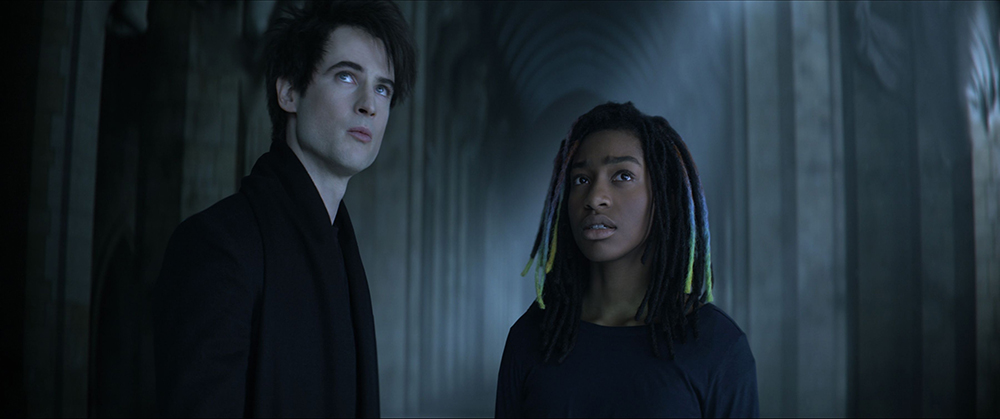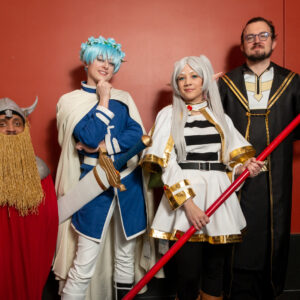Don’t Sleep On The Sandman

One of the most highly anticipated shows of the past decade has finally dropped on Netflix, and I’m here to help you decide if The Sandman is a beautiful dream or a terribly nightmare.
OK, no, I’m not — The Sandman is one of the best pieces of TV or streaming content released this century. So, you don’t have to read any further. But if you want to, I will explain without spoilers why I think that, and what very few issues it does have that keep it from being the undisputed king of its realm.
The 10-episode Netflix series The Sandman is based on the first 16 issues of the 75-issue DC comic series The Sandman, written by Neil Gaiman and drawn initially by Sam Keith then Mike Dringenberg. Gaiman (American Gods, Coraline, etc., etc.) co-developed the series with David S. Goyer (Dark City, Batman Begins, etc., etc.) and Allan Heinberg (Wonder Woman, Grey’s Anatomy, etc.). Turning 16 comic books into 10 episodes did require some tweaking and rearranging, but the series is almost a one-to-one adaptation from issue to episode.
The story, as described in the promotional material and trailers, starts with Dream, (aka Morpheus, Lord of Dreams, the Sandman) being captured by an aristocrat dabbling in magic in the early 20th century. Dream (Tom Sturridge) is held captive for a century before escaping, and that is the inciting incident that drives nearly all of the plots in The Sandman. Dream has to deal with the consequences in the real world of not having someone in charge of guiding dreams and nightmares for more than 100 years.
I admit to having only read a couple of standalone issues of The Sandman comics, but the more I discovered about them the more amazed I was with how wildly innovative Gaiman’s world was. Dream is one of the Endless, beings literally older than multiple iterations of this universe, who embody an aspect of what Gaiman implies is a commonality among any intelligent beings — Destiny, Desire, Despair, Delirium and Death. There is a seventh endless but in the Netflix series they are simply referred to as “the Prodigal” and are missing.
Then I watched the series and realized what I should have known from my experience with other Gaiman works — he is also a brilliant writer of story, plot and dialogue. Working with Goyer, Heinberg, and the other writers, The Sandman pulls all of the best lines from the comics, the most wonderfully complex character stories, and turns them into dialogue that verges on music in its combination of met expectations and auditory surprises. Having someone as talented as David Thewlis deliver the lines of John Dee makes him an even more complex antagonist, but the complexity was already there in the character creation and dialogue.
About that cast. Sturridge is perfect as Dream — what would happen if The Cure’s Robert Smith in his most detached, depressed state was basically a god. Among the well-known actors in this gigantic cast are Gwendolyn Christie as Lucifer, Patton Oswalt as Matthew the raven, Charles Dance as Roderick Burgess, Stephen Fry as Gilbert and Boyd Holbrook (Narcos, Logan) as the series villain The Corinthian. Holbrook is wonderfully charming and chilling as the overarching antagonist. Every second he is on the screen is a master class in tension.

But Holbrook’s excellent portrayal has to cede the top spot to Mason Alexander Park as Desire. They exude sensuality and, well, desire, in every appearance in the four episodes they play a role. If Holbrook’s The Corinthian is the most chilling antagonist, and Christie’s Lucifer is the most fascinating, Park’s Desire is the most compelling and perhaps the most villainous.
It seems a shame to not call out the other amazing performances, such as Vivienne Acheampeong as Lucienne, Dream’s palace librarian, or Vanesu Samunyai as Rose Walker, arguably the second most important character in the series. In her one-episode appearance, Kirby Howell-Baptiste as Death might bring you to tears.
Visually, the special effects are superb, and typically Gaimanesque in how they don’t look like much of what you would see in other dark fantasy stories, with a few exceptions. Overall, the visual tone of the series is consistent — even when black-clad Dream is wandering through a beautiful park on a bright summer day with his sister Death discussing the nature of humanity it still feels like a dark fantasy.
If I had one major complaint (and one that I level at nearly all Netflix properties) it is the sound mix and balance. The music (which is admittedly excellent) gets so loud at times that it assaults rather than enhances. I had to turn down the volume and turn on captions for much of the series.
Without getting into spoiler-like specifics, The Sandman ends by setting up conflicts in a potential season 2. At the time I write this, there has been no confirmation of a second season, but if Netflix doesn’t decide to give us one, it would be criminal. The series debuted in the No. 1 spot in Netflix’s Top 10 in the US, and according to a bunch of retweets from Gaiman, in many other countries as well. While it is clear that some episodes cost quite a bit of money, Gaiman has also said on Twitter that the $15 million per episode estimates that he has seen in print are wrong, indicating that number is too high.
Fingers crossed that the financial problems Netflix is experiencing right now don’t put The Sandman season 2 to sleep.
I give The Sandman (Warner Bros. Television, Netflix; TV-MA; 10 eps) a 9 out of 10.
If you like our work and want to show your appreciation, feel free to tip us at Ko-fi or become a patron on Patreon.



